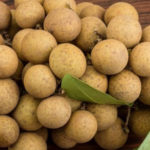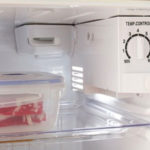Watermelon is a popular type of fruit that is known for its coolness and refreshing taste. In this article, we will share some tips on how to properly preserve watermelon in order to maintain its freshness and flavor!
1 How to preserve whole watermelon
 How to preserve whole watermelon
How to preserve whole watermelon
Depending on the storage time, you can choose to preserve a whole watermelon at room temperature, in the refrigerator, or on the balcony. When keeping watermelon at room temperature, it will stay fresh for about 1 week. It is important to separate the watermelon from other fruits and cover it with a layer of straw on top.
Alternatively, you can store watermelon in the vegetable and fruit storage compartment in the refrigerator for up to 2 months, as long as the compartment does not contain other fresh vegetables or foods with strong odors. Another method to preserve a whole watermelon is by using wax, sand, or clay, but this approach is more complicated and less common.
2 How to preserve watermelon after cutting
 How to preserve watermelon after cutting
How to preserve watermelon after cutting
According to experiments conducted by MBN Korea and the Food Safety Research Institute, using food wrap to preserve cut watermelon in many households is a risky habit, as it can increase the amount of bacteria on the fruit’s surface by nearly 300 times compared to using a sealed container.
Instead, it is recommended to cut the watermelon into bite-sized pieces and store them in plastic or glass containers with lids. If refrigerated, the cut watermelon should be consumed within 2-3 days. For longer storage of up to 6 months, you can cut the watermelon into small cubes, sprinkle powdered sugar, and place them in a plastic container in the freezer compartment.
3 How to preserve watermelon without a refrigerator
If you do not have a refrigerator at home, follow these steps to safely and effectively preserve watermelon at room temperature. When choosing a watermelon, pay attention to the following characteristics:
 How to preserve watermelon without a refrigerator
How to preserve watermelon without a refrigerator
- Watermelon stem: Choose watermelons with withered stems, as they are usually picked at the right time. Watermelons with green stems are often picked early and may have a bland taste.
- Watermelon bottom: Prioritize watermelons with deep hollow bottoms that have a yellow color, as they tend to be very sweet.
- Watermelon rind: Look for watermelons with plump, black-striped rinds, vibrant green color, clear floral pattern, and a straight, glossy texture. These are signs of delicious watermelons.
- Size: Heavy watermelons usually indicate sweetness, while large but light watermelons may have soft flesh and lack flavor.
- Sound when tapping the watermelon: When lightly tapping the watermelon, a good watermelon will produce a loud “thumping” sound. If it sounds hollow, it may be overripe.
These are some methods to preserve watermelon for an extended period while maintaining its freshness. We hope this article provides you with useful tips for safely and effectively preserving fruits!
Refrigerator Labels’>Tips for Prolonging the Life of Refrigerator Labels
Is Refrigerated Leftovers Linked to an Increased Risk of Cancer?
Dr. Lam Van Man, Head of Research, Development and Technology Transfer Department of the Institute of Safety Food, has warned of the risk of food poisoning when reheating leftovers from the refrigerator. But what should we be aware of when it comes to the possibility of these leftovers causing cancer? Here, we explore what the experts have to say on the matter and offer some tips for safe eating.




































